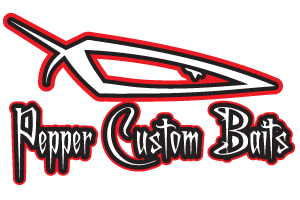UNION SPRINGS, N.Y. – Wednesday rules meeting on the Bassmaster Elite Series trail is always an interesting place to pick up information about baits that will be effective on a particular fishery that particular week. The afternoon before the recent Cayuga Lake Elite in Union Springs, N.Y., it was obvious that the crankbait would be a major tool for Cayuga’s weed-relating bass.
Jeff Kriet: “Dive Master 14 in XXX Shad.”
Brent Chapman: “Dive Master 14 and 20 in XXX Shad.”
Randy Howell: “Dive Master 20 and Howeller DMC in XXX Shad and Chartreuse Shad.”
Hank Cherry: “Dive Master 14 in XXX Shad.”
Check. Message received. When fishing lakes with well-defined grasslines and expansive grassy flats, medium- to deep-diving crankbaits are key. Not to mention, adding natural baitfish sounds, EBS Technology™ and you have the perfect bait for these conditions.
“Cayuga had these giant, vast flats of aquatic vegetation: milfoil, cabbage, coontail, hydrilla,” says Chapman, who relied heavily on the Dive Master 14 and 20 in XXX Shad to crank his way to a seventh-place finish. “You get out on these giant flats and it’s really hard to pinpoint exactly where the fish are. But knowing that bass love edges, you can get on the edges of these giant flats and cover water with crankbaits, coaxing them out with the sound technology of Livingston Lures. That worked really well for me at Cayuga.”
The technique isn’t relegated just to lakes as heavily grassy as Cayuga, though. Anywhere in the country where grass exists, a bait like a Dive Master or Howeller DMC with EBS Technology will allow you to cover water and put a bait in front of active, aggressive fish and call them out to strike- even if they can’t see the bait they can hear it.
“There are a lot of the lakes down south that are famous for cranking those edges, but I’ve done it all over the country,” Chapman says. “I’ve done it in Texas, Alabama, Florida, and now New York. It works all over the country, on a variety of grasses.”
Chapman’s edge-cranking approach started on Day 1 at Cayuga, where he weighed in 19.1 pounds by alternating between the DM 14 and DM 20 depending on the depth of the grasslines he was fishing near Frontenac Park in Union Springs. If the grass was deep, Chapman would throw the DM 20 on 12-pound fluorocarbon; shallower grasslines called for the DM 14 on the same line. Chapman occasionally rotated in a rod rigged with lighter line to get an additional foot of dive, but the 12-pound fluoro and natural diving depths of the DM 14 and 20 were perfect for almost all applications on Cayuga’s grass.
Crank INTO the grass: One of the keys to Chapman’s approach – and a good rule of thumb to remember anytime you’re cranking grass – is to get the bait into the grass. Both largemouth and smallmouth will occasionally move out of a grass bed to hit a bait running overhead, but they don’t tend to respond the same way they will when they’re suspended. Consequently, virtually 99 times out of 100, the most effective crankbait you’re throwing in grass is one that’s running right through the vegetation. Livingston Lures make natural baitfish sounds so in conditions such as this, fish are already on the hunt for it before they see it.
“You want the bait to grab and snag as it goes through the grass,” Chapman confirms. “If you’re fishing the bait right, you bring grass back on the bait every three or four casts because you’re getting it down into the grass. That’s where the bite is.”
Work inside-out or parallel: Chapman’s “lines” on Cayuga depended on how the grass edges ran, but in almost all occasions, he’d set up to work the DM 14 and 20 from shallow to deep, or parallel to a well-defined edge. He’d also cover the edges from slightly different angles, which effectively put his bait in virtually every square inch of the grassline where bass would most likely lay.
The conditions were perfect to utilize EBS Technology™: Vegetation limits the sight of predatory fish but Cayuga’s bass could still hear both the DM 14 and 20 before they saw it.
Get all your Livingston Lures here.

Recent Comments